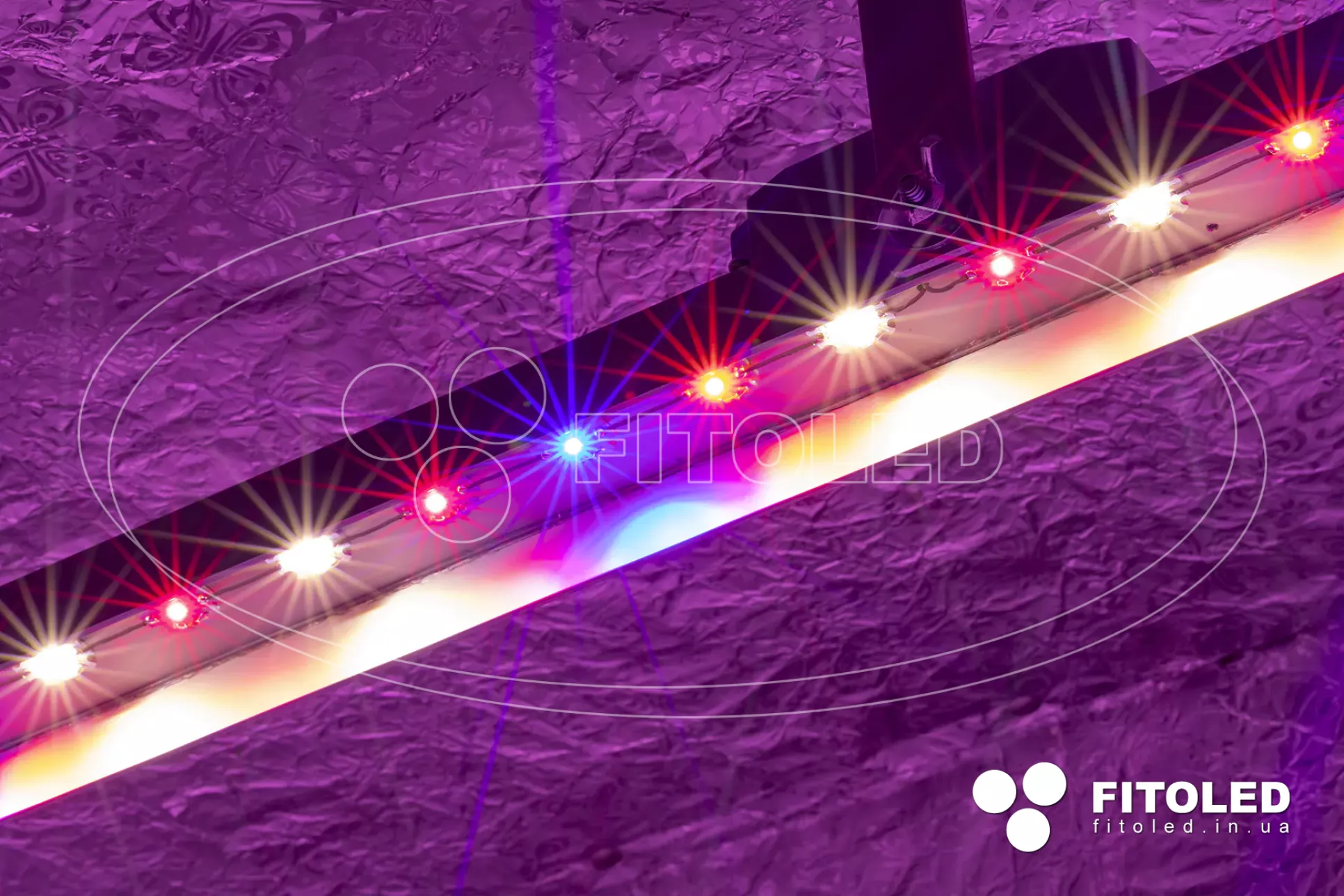Linear LED Lamps for Plants

Linear LED lamps are a narrow and long lamp equipped with an LED strip or a chain of powerful LEDs. If an LED strip is used in the design of a phytolamp, the lamps are less powerful and do not require a large cooling radiator; a standard profile for installing an LED strip is quite suitable. To power such a phytolamp, a 5 or 12 volt power supply is suitable, depending on the type of LED strip. A phytolamp based on an LED strip is mainly used to illuminate plants grown on window sills or balconies, but if plants are grown in places where there is little or no sunlight - for example, in grow boxes - more powerful lamps will be needed. In this case, a lamp with powerful LEDs placed on a radiator of sufficient area to remove the heat generated during operation of such a phytolamp is better suited. As a power source for LEDs, special type power supplies are used - drivers, which provide the necessary current consumption for optimal operation of the LEDs.
For ease of use, LED phyto lamps can be equipped with special brackets for mounting them or stands for installing them on a windowsill. Standard LEDs have an illumination angle of approximately 120 degrees, which does not always allow for optimal use of the emitted light. For this purpose, there is special optics for LEDs, which allows you to focus the light, creating an illumination angle from 10 to 60 degrees, thanks to which such a phytolamp can be used more optimally. Unfortunately, optics are used only in lamps that use powerful LEDs; lamps based on LED strips in all cases create more diffused light. To protect against overheating, LED lamps are equipped with special protective devices that turn off the power when the lamp overheats.
Depending on the conditions under which and for what purposes the phytolamp will be used, its design may be different. In general, a linear phytolamp measures about 1 meter and is optimally suited for installation on any window sill. Linear LED lamps have also proven themselves well for supplementary illumination of plants grown in greenhouses or for creating full illumination for the normal growth of plants on shelving or other similar structures. If plants are grown in growboxes, then everything will depend on the design of the growbox, its size and the type of plants that grow in it. In some cases, linear luminaires based on high-power LEDs are quite suitable, and in some cases it is better to pay attention to LED luminaires of a different design - for example, LED panels or luminaires based on high-power COB LEDs.